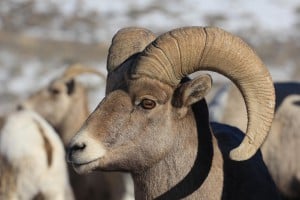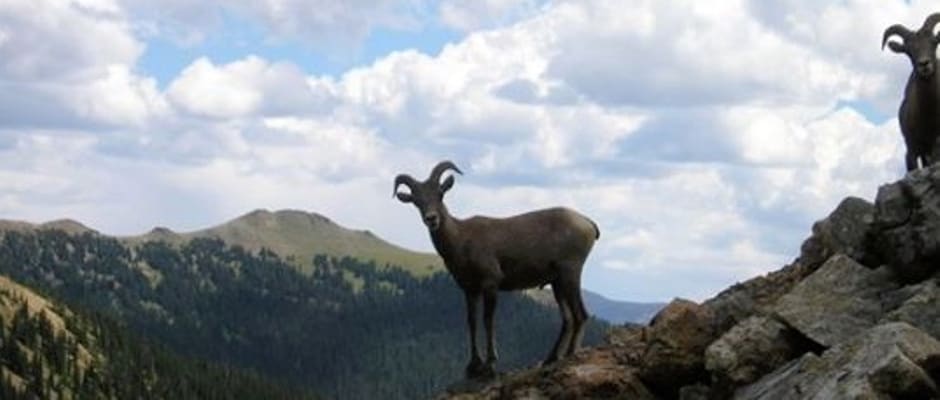Share this article
Inbreeding Not to Blame for Bighorn Sheep Decline
Catherine Driscoll was hiking with her father in the Never Summer Mountain Range of the Rocky Mountains. They were collecting bighorn sheep’s fecal pellet samples to study their genetic variation, and decided to take a break on a ridge. While they were familiar with the warnings not to approach the sheep, Driscoll and her father weren’t concerned since the sheep are rarely around when people are — but this time was different.
“Shh!” Driscoll’s father said, pointing behind her. Driscoll turned around to meet the eyes of 20 rams standing in a line about 20 feet away as if they were waiting to go somewhere, before turning to walk away. “They looked at us like, ‘what in the world are you doing up here?’” Driscoll said. “People don’t usually see that many right in front of them.”
National Institute of Health Research Fellow and then-graduate student at the University of Colorado, Boulder, Catherine Driscoll was conducting a study on the four sheep herds in Rocky Mountain National Park, paying particular attention to the Mummy herd — a herd that sits on the east side of the park near the more heavily populated areas that is still having trouble rebounding from a pneumonia outbreak in the mid-1990s.

A bighorn sheep in Colorado is pictured above. In a recently published study, researchers found that inbreeding, a common hypothesis for bighorn sheep decline in Colorado, is likely not the reason for their decline.
Image Credit: Ann Hough / U.S. Fish and Wildlife Service
In the study published in the Journal of Wildlife Management, Driscoll and her team tested a common hypothesis that inbreeding is the reason for their decline as well as the decline of other herd populations in the mountains. This was commonly believed because bighorn herds are small and isolated in their mountain ecosystem due to the pneumonia outbreak, putting them at risk for low genetic variability or a genetic “bottleneck,” according to Driscoll. Further, previous research suggests that inbreeding can weaken the bighorns’ immunity to diseases.
However, after collecting fecal samples and using a variety of genetic markers including microsatellite and mitochondrial DNA, the researchers were able to rule out low genetic variation and inbreeding depression as the reason for their decline.
“The conclusion was that it wasn’t reasonable to say pneumonia caused a genetic bottleneck,” Driscoll said. “The migration and gene flow among the herds is sufficient to maintain comparable genetic variation among all herds, and may have genetically rescued the Mummy after the pneumonia outbreak.”
Driscoll said there are a few other possibilities for their decline that have not been tested yet. Because the Mummy herd is closer to more popular trails that are easier to access, the herd is much more affected by human interaction. There is also a major road that crosses over a mineral lake that the sheep rely on to raise healthy lambs. Driscoll suggested they might also have a lower quality of nutrition or more interaction with domestic bighorns, which puts them at a higher risk for contracting pneumonia.
“Whatever was going on, their variation is reasonable and comparable to the other four herds and other studies in similar populations,” Driscoll said. “We feel we can say that lack of genetic variation is not causing their failure to thrive.”
Header Image: A bighorn sheep stands in Rocky Mountain National Park. Researcher Catherine Driscoll took this photograph while climbing mountains in the park in order to collect fecal pellet samples for a DNA analysis in order to test genetic variation of the bighorn sheep herds.
Image Credit: Catherine Driscoll








